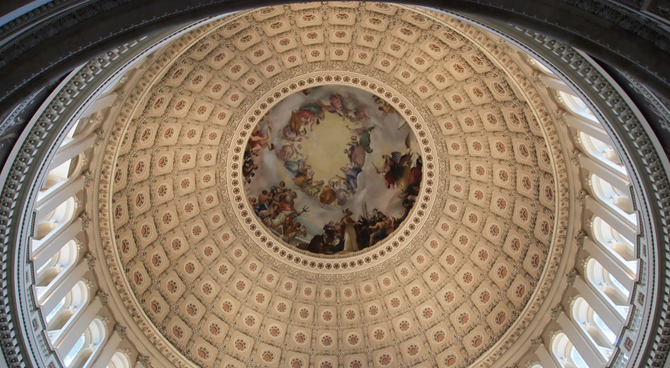As anti-production policies take hold, supply and worker shortages appear and inflation looms.
By Phil Gramm and Rick Scott
May 19, 2021 12:49 pm ET
The April Consumer Price Index rose by 0.8%, or 9.6% on an annualized basis. On an annual basis the inflation rate for the past three months has been 7.2% and 6.2% for the first four months of 2021. The core inflation rate, excluding food and energy, on an annual basis rose in April by 11%, a rate not exceeded since June of 1982. While the price increases are significant, broad and accelerating, are they the temporary effects of demand recovering from the pandemic shutdown more quickly than production, or is there evidence that this is the return of the inflation that plagued us for a generation and we paid such a high price to escape 40 years ago?
As traditionally understood, inflation is too much money chasing too few goods. While it may seem old-fashioned to ask in this brave new world of modern monetary theory, where Joe Biden declared last year that “ Milton Friedman isn’t running the show anymore,” is there reason to be concerned that the broad money supply, M2, grew by 24.6% over the last year, a postwar high? That’s more than twice the rate it grew in 1978 before inflation reached 13.4% in 1979 and almost three times the rate it grew amid the “guns and butter” spending surge during the Vietnam War.
What about the extraordinary stimulus spending of the past year? Larry Summers, the highly respected former Treasury secretary and economic adviser to Presidents Obama and Clinton, warned that the Biden stimulus would create purchasing power “at least three times the size of the output shortfall” and would be “the least responsible macroeconomic policies we’ve had in the last 40 years.”
We need only look at the Bureau of Economic Analysis comparison of the first quarter of 2021 to a year earlier to confirm Mr. Summers’s concerns. Wages and salaries are already significantly larger in the first quarter of 2021 than they were before the pandemic. Transfer payments have almost doubled and personal savings have surged to an extraordinary $4.1 trillion from $1.6 trillion a year ago. The end of the pandemic isn’t only unleashing the pent-up demand of the pre-shutdown economy. It is opening the floodgate to a torrent of spending fueled by fiscal and monetary stimulus not seen since the Civil War.
The U.S. economy clearly has the power to iron out the natural problems of restarting production, but the very nature of the subsidies in the $6 trillion Biden administration stimulus, relief and infrastructure bills constrain production. In its modern incarnation, socialism denies that government incentives and constraints have anything to do with people’s decisions to work, save and invest. Experience teaches otherwise.
The clearest example is the federal supplement to unemployment payments. The federal payments have made not working a viable or even preferred option to working. And it isn’t only excessive jobless compensation. The Congressional Budget Office found that the Affordable Care Act would cut the number of hours worked by as much as 2%, so how can expanding ObamaCare in the recent stimulus not affect employment? The same applies to expansions of Cobra, the monthly child credit and other income supports.
Historically in America, the best healthcare, housing, transportation, nutrition and child-care program was a job. If you give people things they typically get from a job, don’t be surprised when they don’t take a job. The Biden administration claims that it hasn’t seen evidence that its unemployment bonus is keeping people from work.
With the Labor Department reporting record job openings and the National Federation of Independent Business detailing a record number of small businesses offering jobs but finding no takers, that claim isn’t credible. Since the War on Poverty began, government transfer payments have risen to provide more than 90% of the income of the bottom 20% of income-earning households, and the labor force participation rate among work-age households has collapsed to 36% from 68%.
The Biden administration also asks Americans to believe that it can raise income, corporate and death taxes, smother the private sector with regulations, kill the fossil-fuel industry and fill the regulatory agencies with activists fundamentally hostile to the nation’s economic system and it will have no effect on economic performance. But back in the real world, much of what the president is doing will impede the recovery, reduce economic capacity and fuel inflation.
If Congress sees inflation as a real threat, it should first stop spending. Any unobligated balances in the Biden stimulus or previous stimulus bills can no longer be justified under current economic circumstances and should be rescinded. Rescinding the spending authority in the Biden stimulus at the end of the fiscal year on Sept. 30 would save $710 billion, according to CBO. Rescinding the authority sooner and including all previous stimulus bills might save $1 trillion.
Congress should repeal the enhanced unemployment benefits and reinstate the Clinton-era work requirements for welfare. Work requirements should be applied to all unearned benefits to anyone except the elderly, the disabled and students. Congress should adopt a real, enforceable budget that funds infrastructure and the other functions of government without further expanding the deficit and debt. The debt ceiling, which expires on Aug. 1, should be used to set into place a long-term binding program to stop the federal debt from growing beyond 100% of gross domestic product.
If the inflation of the 1970s and ’80s has returned, it is the “Gods of the Copybook Headings” that have returned once again to teach us that water will wet us, fire will burn, and government can’t give us something for nothing.
Mr. Gramm is a former chairman of the Senate Banking Committee and a visiting scholar at American Enterprise Institute. Mr. Scott is a U.S. Senator from Florida and chairman of the National Republican Senatorial Committee. Mike Solon contributed to this article.





